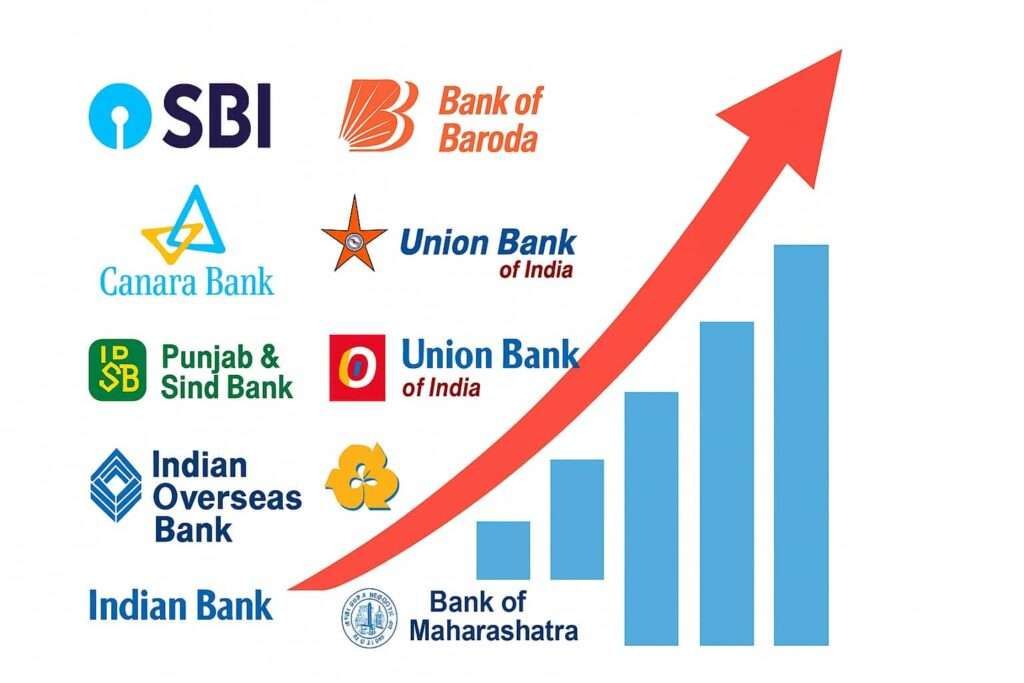Nov 06 2025, News Desk – All 12 public sector banks (PSBs) together made a solid profit of ₹49,456 crore in the September quarter of FY26, marking a 9% jump from ₹45,547 crore earned in the same quarter last year. The performance not only signals consistency but also reflects the structural shift happening across India’s banking sector, where PSBs are no longer the underdogs but emerging power players.
First of all, let’s be clear — this isn’t a one-off event. For several quarters now, PSU banks have been delivering profits in sync with economic momentum, cleaner balance sheets, and more digital efficiency. Here’s a quick snapshot of how the numbers stack up –
Q2 FY26 Performance — Bank-wise Summary
| Bank | Q2 FY26 Profit (₹ crore) | YoY Change (%) | Comment / Highlights |
|---|---|---|---|
| State Bank of India (SBI) | 20,160 | +10% | Still the heavyweight and dominating as per results, contributing ~40% of total PSU profit; focus shifting to retail & digital. |
| Bank of Baroda | 4,809 | -8% | Slight dip, but improving margins and asset quality. |
| Union Bank of India | 4,249 | -10% | Lower profit YoY, yet operational efficiency up. |
| Canara Bank | ~3,720* | +19% | Strong retail book, rising CASA share. |
| Punjab National Bank (PNB) | ~3,090* | +14% | Consistent growth, lower slippages. |
| Indian Bank | ~2,200* | +12% | Supporting more to MSME and retail segments. |
| Bank of India | ~1,960* | +8% | Gradual improvement, credit growth steady. |
| Indian Overseas Bank (IOB) | 1,226 | +58% | Big turnaround, strong NPA control. |
| Central Bank of India | 1,213 | +33% | Now a serious player in retail and SME credit. |
| UCO Bank | ~1,050* | +3% | Profit steady, digital adoption rising. |
| Bank of Maharashtra | ~920* | +23% | Best-in-class capital adequacy, expanding retail base. |
| Punjab & Sind Bank | ~760* | +23% | Smallest of the 12 but finally consistent. |
| Total (All 12 PSBs) | 49,456 | +9% YoY | Collective strength, solid profitability trend. |
Note- These are pure estimated figures based on public filings, press release Q2 results, and financial summaries from stock exchanges. For better or accurate stats, please visit the official portal of the specific Bank.
What’s Really Driving These Numbers so high and better in FY2025-2026
Here’s what’s happening under the hood — PSBs are no longer just beneficiaries of government support; they’re becoming leaner and more agile. Net interest margins (NIMs) remain above 3% for most, while gross NPAs have fallen below 4% — something unimaginable just a few years ago.
Furthermore, digital transactions now account for 85–95% of total volumes across top PSBs. Even banks once seen as “old-school” — like Central Bank and IOB — are investing heavily in mobile and AI-driven credit scoring.
Credit growth remains strong at 12–14%, led by housing, MSME, and personal loans. Corporate credit is still cautious, but steady. Deposits are also growing, albeit at a slower rate of around 9% YoY, indicating a tightening of liquidity.
What’s the future for Public Sector Banks now?
Now, the bigger question — where are these banks headed next?
In FY26 and beyond, the focus is shifting from profitability to performance sustainability. The next phase is about technology integration, risk automation, and improving customer journeys — not just balance sheets.
- SBI, for example, is betting on AI-based lending models, a Digital savings account, and cross-selling through YONO. such as – 64% of Accounts Opened via YONO only.
- Bank of Baroda is deepening its retail focus after success in digital personal loans.
- Canara Bank and Indian Bank are quietly modernising back-end systems to compete with private peers.
- Smaller PSBs like IOB and Central Bank are expanding profitably without additional capital infusion — a major sign of confidence.
Bottom Line
Public sector banks are no longer passengers in India’s financial story — they’re steering it. After years of bad loans, recapitalisations, and criticism, they’ve finally found balance. The Q2 FY26 profit surge shows discipline, digital maturity, and newfound competitiveness.
In short, the PSB revival is not about government push anymore — it’s about genuine performance.
And if this trajectory continues, FY27 might just be the year India’s PSU banks rewrite their legacy as growth engines, not liabilities.
More News – SBI Q2 Results: Bank Crosses ₹100 Trillion + 9.97% Profit, and Leads Digital Growth via YONO
Stay connected with us for more banking data!!







